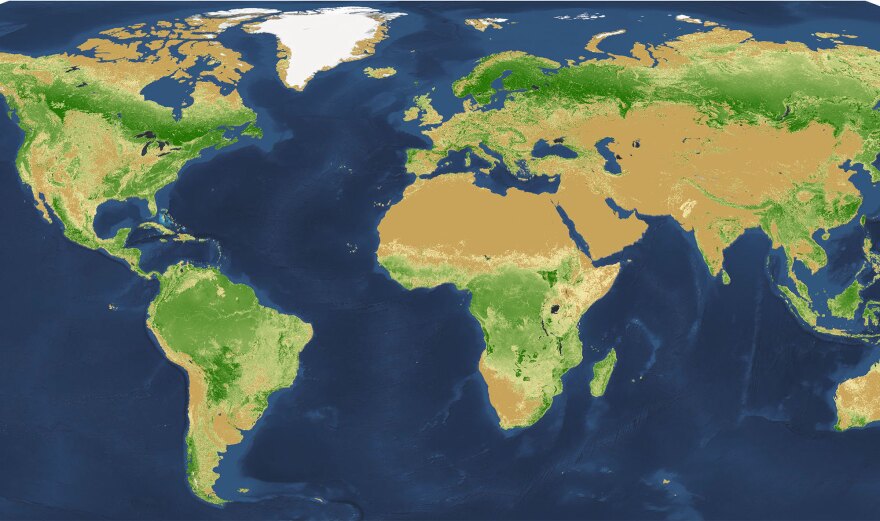Here is a pop quiz: How many trees are on the planet?
Most people have no idea.
A new study says the answer is more than 3 trillion trees — that's trillion with a T, and that number is about eight times more than a previous estimate.
Thomas Crowther was inspired to do this tree census a couple of years ago, when he was working at the Yale School of Forestry and Environmental Studies. He had a friend who was working with a group with an ambitious goal: trying to fight global warming by planting a billion trees. A billion trees sounded like a lot. But was it really?
"They didn't know if planting a billion trees was going to add 1 percent of the world's trees, add 50 percent of the world's trees," recalls Crowther. "They didn't even know if it was even possible to fit a billion trees on Earth."
So his pal asked him a simple question: How many trees are growing on our planet? "I assumed that this was somewhere out there, it's information that someone will know," says Crowther.
That turned out to be wrong, he says. "Having spoken to a lot of forestry experts, it doesn't seem like anyone had any idea."
There was one estimate based on satellite images: about 400 billion trees worldwide, or 61 trees for every person.
But there were doubts about that number because another recent estimate, based on ground-truthed measurements, found 390 billion trees in the Amazon basin alone.

Crowther knew there was a way to get much better numbers.
"We used ground-sourced information," says Crowther. "All of the information that went into our models was generated from people standing on the ground counting numbers of trees in a given area. And so we could relate this information to what the satellites are telling us."
To get a better estimate, his team took advantage of the fact that countries produce detailed forest inventories. "It definitely couldn't have been done without all of those huge national forest inventories and thousands of people going out, collecting tree information around the world," says Crowther.
Using information from around 400,000 forest plots, the researchers painstakingly crunched a ton of numbers. And then it was time for the computer to spit out the final total.
"We all gathered in a room, it was a very exciting time," remembers Crowther. "We'd been working toward it for two years."
He says the huge number astonished them. And then he got a little worried.
"My fear is that a lot of people might think, 'OK, well, there's loads of trees, so who cares about the environment, there's plenty left! No worries!' What I'd highlight is that it's not like we've discovered new trees," he says. "We've just generated a new number that will help us to understand the global forest."
The results are being published by the journal Nature.
"It's quite rigorous. It's using all of the best available data that we have at a global scale, so I think it's a nice advance," says Matthew Hansen, a geographer at the University of Maryland who maps land cover.
Hansen says in the future, he'd like to see new instruments in space that could do increasingly detailed observations of forests. That would let scientists do a more direct census of trees over and over, to track how the total number changes.
Crowther says their work suggests that, compared with the days before human civilization, the world has lost roughly half its trees. And the gross number of trees lost each year because of humans is now about 15 billion.
So did all of this news discourage that group that wanted to plant a billion trees?
"Based on this, they really want to upscale their efforts hugely," says Crowther, who explains that the new analysis has spurred them on. "Their goal is now to plant a trillion trees."
Copyright 2021 NPR. To see more, visit https://www.npr.org.



